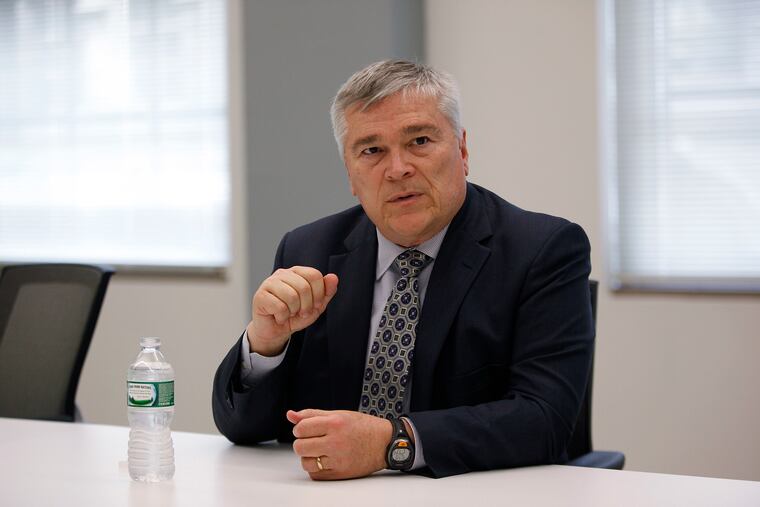Penn State’s Eric Barron is third-highest-paid public university president in the country, report says
According to the Chronicle of Higher Education, the president of Penn State's total compensation for 2018 was $1.83 million, including a $1 million bonus.

Pennsylvania State University president Eric J. Barron was the third-highest-paid president among leaders of public doctoral universities in the country in 2018, according to an annual report in the Chronicle of Higher Education.
The main reason?
Barron, 67, got a $1 million bonus that year -- an $800,000 “completion payment” for remaining on the job four years, and an annual $200,000 retention bonus.
Barron’s total compensation for the year was $1.83 million, behind William H. McRaven, president of the University of Texas, who received nearly $2.6 million, and Michael K. Young, president of Texas A&M University at College Station, who got nearly $1.9 million.
Three other area college presidents, according to the Chronicle list, were in the top 50: Temple University’s Richard M. Englert, $875,616 (including a $50,000 bonus); Robert Barchi, president of Rutgers University, $870,644 (no bonus listed); and Ali Houshmand, president of Rowan University, $753,141 (including a $84,150 bonus).
Barron’s completion payment was negotiated as part of his original contract, the university said. If he remained on the job five years, he was due to collect $1 million. Last May, the university approved a three-year contract extension for Barron, running through 2022, and as part of that extension agreed to pay Barron $800,000 of the completion payment for the four years served.
Under the contract extension, Barron will get another $800,000 if he remains through the 2022 pact.
Mark Dambly, president of Penn State’s board of trustees, cited a string of accomplishments achieved under Barron, who took the helm in 2014 as the university was still recovering from the Jerry Sandusky child sex-abuse scandal that broke in 2011.
“Dr. Barron is an exceptional leader and has a consistent track record of success, moving the university ahead on numerous and critical key initiatives and execution of the strategic plan,” Dambly said in a statement.
He also cited Barron’s focus on economic development, fund-raising, and making college accessible to and affordable for more students. The university has frozen tuition statewide for in-state students twice in the last five years. The school also is in a $1.6 billion fund-raising campaign due to be completed in 2021. With 60 percent of the campaign completed, the university has reached 68 percent of the goal, Dambly said.
Formerly the president of Florida State University, Barron, a climatologist, arrived at Penn State less than three years after Sandusky, a former assistant football coach, was charged with abusing young boys, and several of the university’s top leaders were ousted. He was not new to the university and had worked there years before as a geosciences professor and dean of the College of Earth and Mineral Sciences.
Barron has had to manage the university while members of its board of trustees have remained deeply divided over the university’s handling of the Sandusky case.
He cracked down on Greek life at the university after the death of sophomore pledge Tim Piazza in 2017 following a booze-fueled fraternity party. Last year, he co-led a national meeting of university officials on ways to improve fraternity and sorority life.
In May, he announced plans he is passionate about: a $71 million art museum, the first phase of a vision to create a cultural district at the university. An art fan who recently began oil painting again, Barron has with his wife donated $100,000 to the project.
While Barron ranked third in overall compensation in the Chronicle survey, his base salary — $834,364 — trailed nine other presidents. Overall compensation, according to the Chronicle, includes “base pay, bonuses, deferred compensation (paid out), severance, remaining reportable pay, nontaxable benefits, and non-payroll compensation.”
The Chronicle compiles and publishes the salaries of public university presidents every year. The publication also publishes information about the compensation of private college presidents separately.